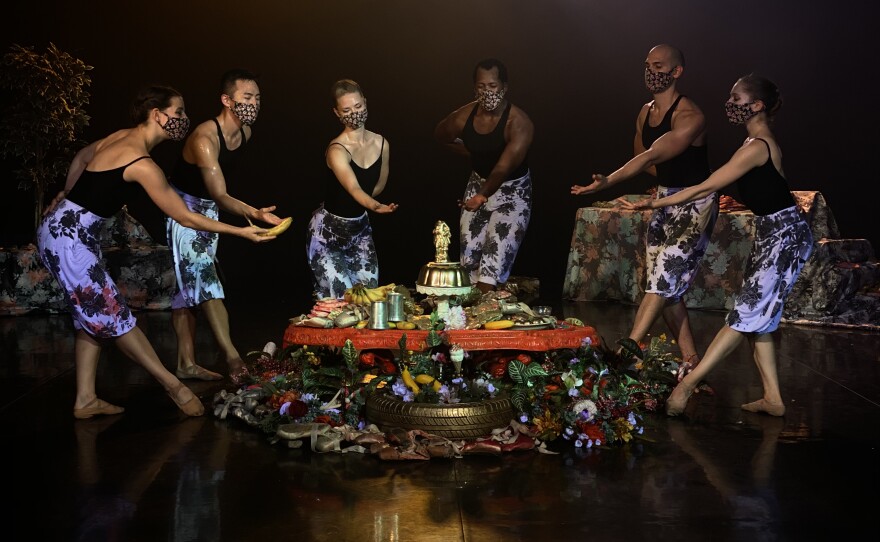Two choreographers are the latest artists to take up a residency at Akron Soul Train, and they’re using it as an opportunity to connect with audiences despite the pandemic.
The work, called "FEAST: a ballet," is meant to showcase society’s need to have an abundance of things out of want rather than need. It’s a combination of art and dance presenting narratives about economic theories, environmental degradation and wealth distribution.

The ballet was originally meant to be performed live on stage, but because of COVID-19, it has been adapted into a film with help from a local production company.
FEAST will be on display at Akron Soul Train’s Capsoul Gallery through Dec. 23.
The ballet was inspired by the work of artist Corrie Slawson whose previous work, “Let Them Eat Steak” consisted of 300 steaks plastered all over the exhibit.
Slawson, along with co-choreograhers Christina Lindhout and Kelly Korfhage, partnered with Slawson's husband Mark Lefkowitz, a sustainability journalist, and Dr. Dalindyebo Shabalala, assistant professor of law at the University of Dayton Law School, to research the history of colonialism. Together, the five of them constitute the collective, Creative Destruction.
The collective received funding for the ballet from the Andy Warhol Foundation and Akron Soul Train's artist residency program.
"A big theme that we were working on with Corrie and with each other with the choreography is the ugly under the beautiful. What is misleading?" Lindhout said.
Based on their research the collective picked six commodities—sugar, coffee, bananas, oil, timber and beef—to showcase that they were unfairly traded during colonial times.

The performance centers on four main characters representing people of various social classes, including one based on Marie Antoinette. Similar to the French monarch, this character, Marie is a ruler who wants all these commodities for herself at a cheaper and faster rate.
Marie in partnership with another character, Lancelot, form the heart of the system presented in the ballet. They are the aristocrats everyone else wishes to please or become. Lancelot isn't played by a real person but a gold statue placed at the center of the ballet. He symbolizes a destructive system worshipping a false golden idol.
There are also six dancers that form the corps de ballet. They move in constant circular motions during the ballet to symbolize a never-ending cycle of supply and demand. These dancers originally trapped in a system, aiming to please this idol, eventually see reality and decide to overthrow him.
The third character, Kat Van Rensellaer's name is derived from the Dutch merchant Killian Van Rensellaer who established the Manor of Renssellaerswyck in today's New York's Capital District. Just like the merchant and his father, Kat is a complicit foot soldier and enabler of everything Marie desires.

The fourth main character is Tina Putzfrau. "Putzfrau" means "cleaning lady" in German. Tina is the invisible worker that labors in the shadows, cleaning up the mess created by the system while forging a path for the corps de ballet or the common people. She symbolizes the labor behind these commodities.
“When someone looks at a gorgeous ballet, they’re not really seeing the hard work or the blisters or whatever that went into that," Lindhout said. "Same with these commodities. When people see a beautiful steak on their plate, they don’t see what it took to get that steak to their plate.”















